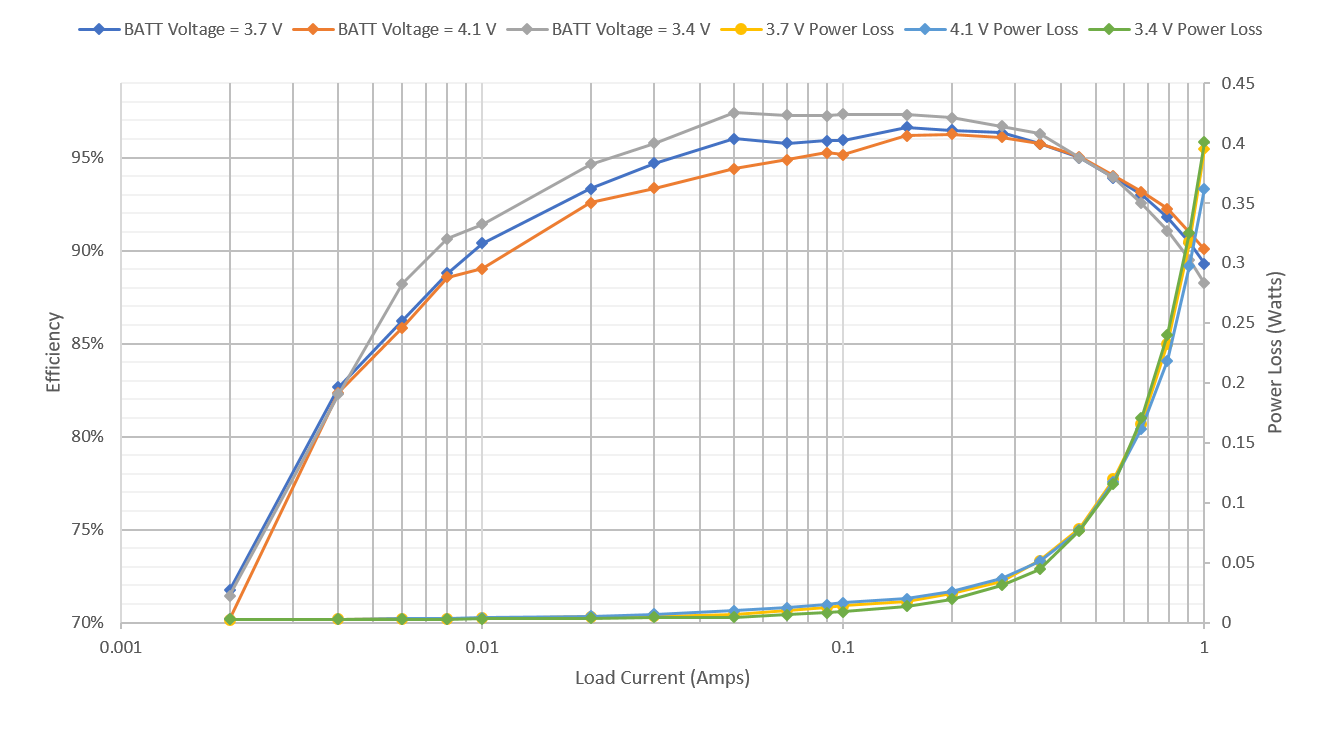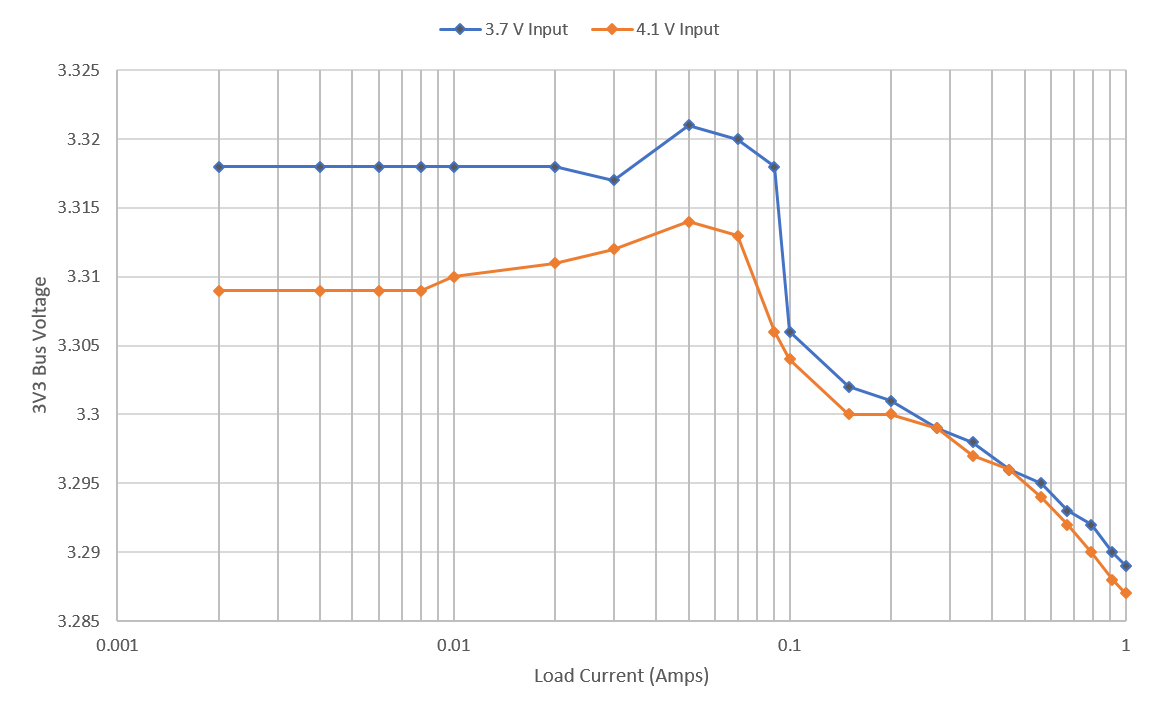TIDUF26 june 2023 BQ24072 , LMR36520 , TLV62568 , TPS2116
- 1
- Description
- Resources
- Features
- Applications
- 6
- 1System Description
- 2System Overview
-
3Hardware, Software, Testing Requirements,
and Test Results
- 3.1 Hardware Requirements
- 3.2 Test Setup
- 3.3 Test Results
- 4Design and Documentation Support
- 5About the Author
3.3.10.1 TLV62568
Efficiency on the BATT to 3V3 path is perhaps the most crucial because high efficiency on this path allows longer battery life and a smaller battery. The TLV62568 device provides excellent efficiency, peaking at 96.6% efficiency at 150 mA at a nominal 3.7 battery voltage. The lower the battery voltage, the higher the efficiency of the BATT to 3V3 conversion. For this test, the input voltages were measured at C9 and the output voltages were measured at C10. The input current was fed at C9 and the output current to an electronic load was pulled from C10.
 Figure 3-52 Battery to 3V3 Power Bus
Efficiency and Power Loss
Figure 3-52 Battery to 3V3 Power Bus
Efficiency and Power Loss Figure 3-53 TLV62568 Load
Regulation
Figure 3-53 TLV62568 Load
Regulation